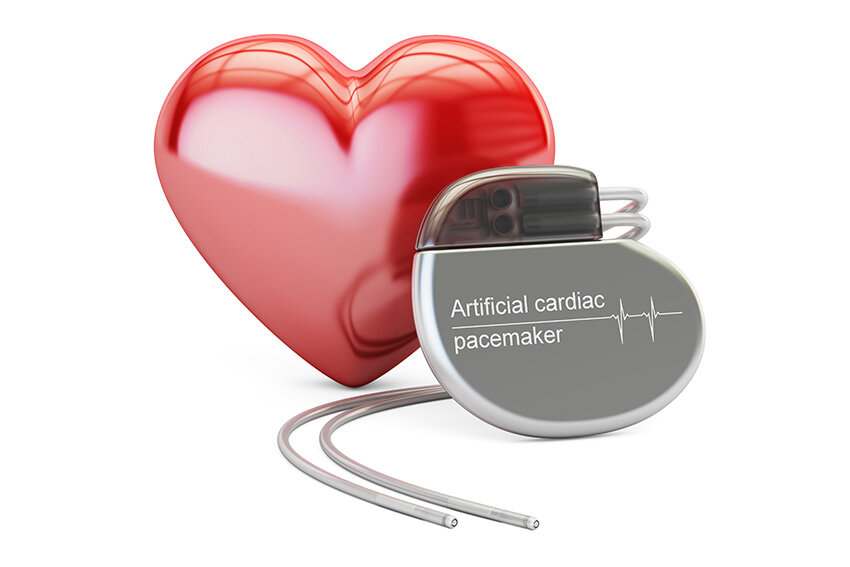Implantable Device Insertion
What are implantable medical devices?
There are many types of implantable medical device that are used to treat different heart conditions. We use the following devices to help keep track of your heart rate, improve your heart’s rhythm and pump blood around the body to support your circulation.
1. Implantable cardioverter defibrillator
What is an Implantable cardioverter defibrillator (ICD)?
An Implantable cardioverter defibrillator (ICD) is a small, battery powered device with wires attached that is implanted in the heart tissue to keep track of your heart rate. The device delivers electrical shocks, can detect the rhythm of the heart and sometimes ‘paces’ the heart's rhythms, as needed.
Why do I need an Implantable cardioverter defibrillator (ICD)?
You may need an ICD if you have recurrent, sustained arrythmia (abnormal heart rhythm) such as ventricular tachycardia (fast heart rate) or ventricular fibrillation (when the heart ventricles quiver instead of pumping blood). An ICD helps restore the heart to normal rhythm and helps prevent sudden death from cardiac arrest (when the heart stops pumping blood).
How long does it last?
The battery in most pacemaker devices lasts around 5-7 years after which time the battery will need to be replaced.
2. Pacemaker
What is a pacemaker?
A pacemaker is a small, battery powered device with wires attached that is implanted in the heart tissue. The device sends electrical impulses through the heart tissue that help keep the heartbeat in a regular rhythm.
Why do I need a Pacemaker?
You may need an artificial pacemaker when your natural pacemaker stops working and causes the heart to beat too fast, too slow or irregularly. A pacemaker will keep the heart in a normal rhythm. A temporary pacemaker may be needed after a heart attack to help the heart return to normal rhythm.
How long does it last?
The battery in most pacemaker devices lasts around 5-7 years after which time the battery will need to be replaced.
3. Left Ventricular Assist Device (LVAD)
What is a Left Ventricular Assist Device (LVAD)?
A battery powered pump placed in the upper abdomen that helps push blood out of the heart to the body. The left ventricle is the large, muscular chamber of the heart that pumps blood out to the body. A LVAD helps maintain the heart’s pumping ability when it can’t effectively work on its own.
Why do I need a Left Ventricular Assist Device (LVAD)?
A LVAD may be used to ‘buy time’ before a heart transplant or be a viable long term treatment in itself. For example, when heart transplant is not an option.
How long does it last?
LVADs may be used for weeks to months. You can leave the hospital with a VLAD and have an acceptable quality of life while waiting for a donor heart to become available.

